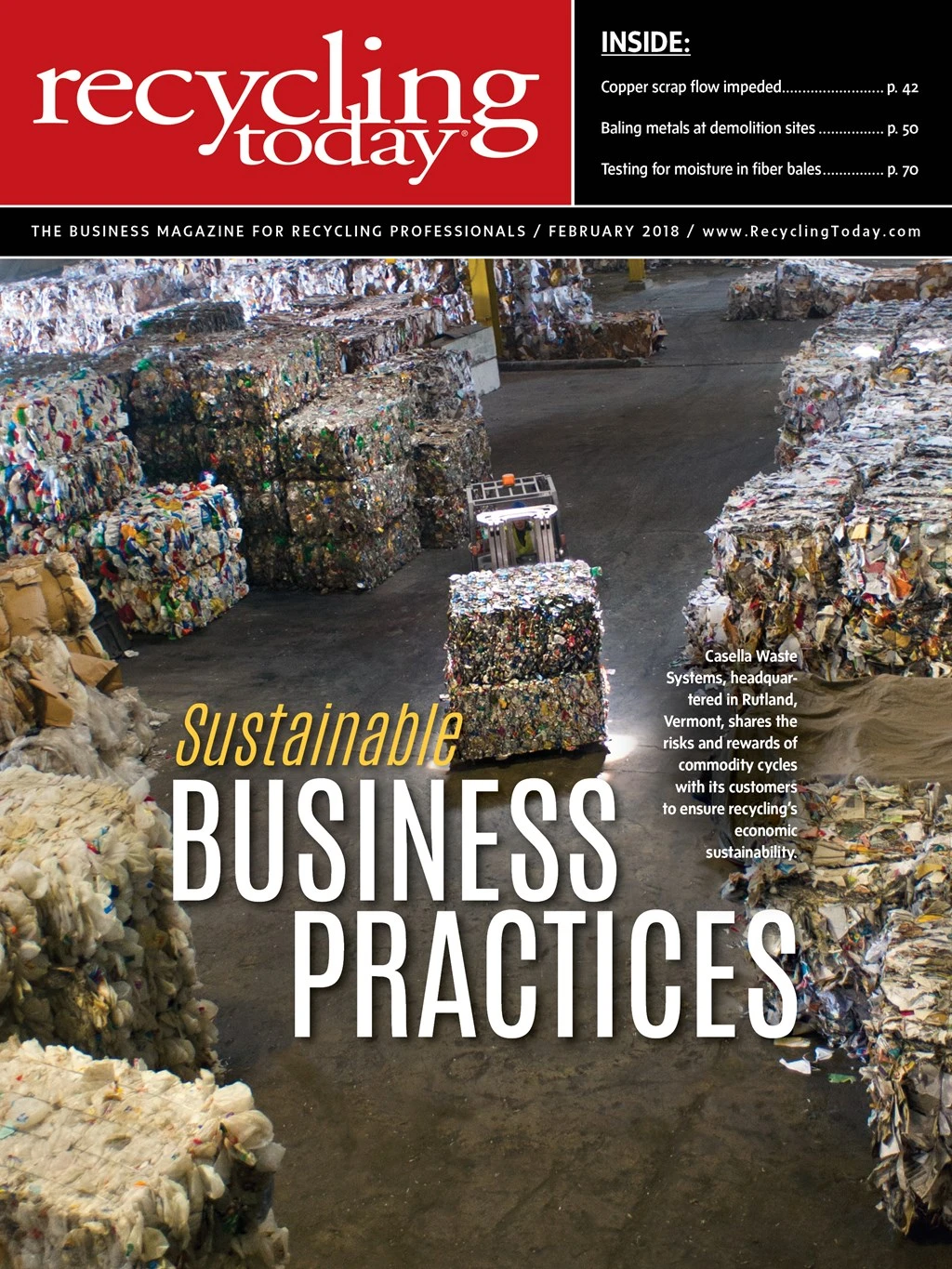Actions occurring in China continue to drive markets for many secondary plastics. With the reduced marketability of bales comprised of Nos. 3 through 7 plastics, some communities are reconsidering the plastics they will accept for recycling in their curbside residential recycling programs.
Recently, communities in southwest Idaho with recycling programs serviced by Phoenix-based Republic Services announced they would only accept Nos. 1 and 2 plastic bottles for recycling, citing changes in global recycling markets as the reason.
A plastic scrap broker who is based on the West Coast says many more communities are reconsidering the postconsumer plastics they accept for recycling given the import restrictions China has been instituting. “Many counties/cities are in the process of changing their recycling programs since there is a lack of viable markets for many of the mixed grades now that China has stopped taking [them],” he says.

The West Coast broker says material recovery facilities (MRFs) are generating fewer bales of secondary plastics as a result. “I would say with the export market taking less material than before and the export pricing at historic lows, we are seeing generation slow down,” he says. “Some suppliers are not creating the lower-grade mixed packs they were before.”
Domestic demand for commodity grades such as polyethylene terephthalate (PET) and high-density polyethylene (HDPE) remains strong, the West Coast broker says. However, domestic consumers “aren’t able to fill all the gaps for the lower-grade material that China was taking.”
A broker based in the Midwest says his company has been declining “low-end materials” it would commonly export.
China has banned postconsumer plastics from entering that country, so the West Coast-based broker says much of this material has been going to other Southeast Asian (SEA) countries. However, that has come with challenges.
“Carriers are very strict when shipping to SEA countries because of all the issues that occur there with stuck/abandoned cargo,” the broker based on the West Coast says. “Some carriers are declining to carry cargo there, and others make us go through strict protocols before they will give us containers.”
He adds that as SEA ports become inundated with scrap that previously went to China, congestion is becoming a problem. Customs issues also can arise.
The Midwest-based broker says Chinese consumers of plastic scrap are growing frustrated with the situation. “Chinese buyers are moving out of their country for business reasons,” he adds. “They are starving for materials but just cannot get them into the country.”
The Midwest broker says he is waiting to see what happens after the Chinese New Year, when he is hopeful more import permits will be issued.
When it comes to transporting plastic scrap via truck, he says, “Prices are now ridiculous. This is the new norm; it’s brutal.”
The broker describes the current ratio of loads to truckers—14 to 1—as “the worst ever.”
He adds that the new mandated electronic logging requirements for truck drivers are “making the truckers rich” but “will eventually hurt the consumer.”

Explore the February 2018 Issue
Check out more from this issue and find your next story to read.
Latest from Recycling Today
- Phoenix Technologies closes Ohio rPET facility
- EPA selects 2 governments in Pennsylvania to receive recycling, waste grants
- NWRA Florida Chapter announces 2025 Legislative Champion Awards
- Goldman Sachs Research: Copper prices to decline in 2026
- Tomra opens London RVM showroom
- Ball Corp. makes European investment
- Harbor Logistics adds business development executive
- Emerald Packaging replaces more than 1M pounds of virgin plastic





